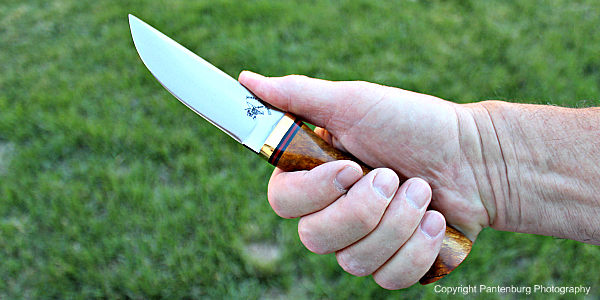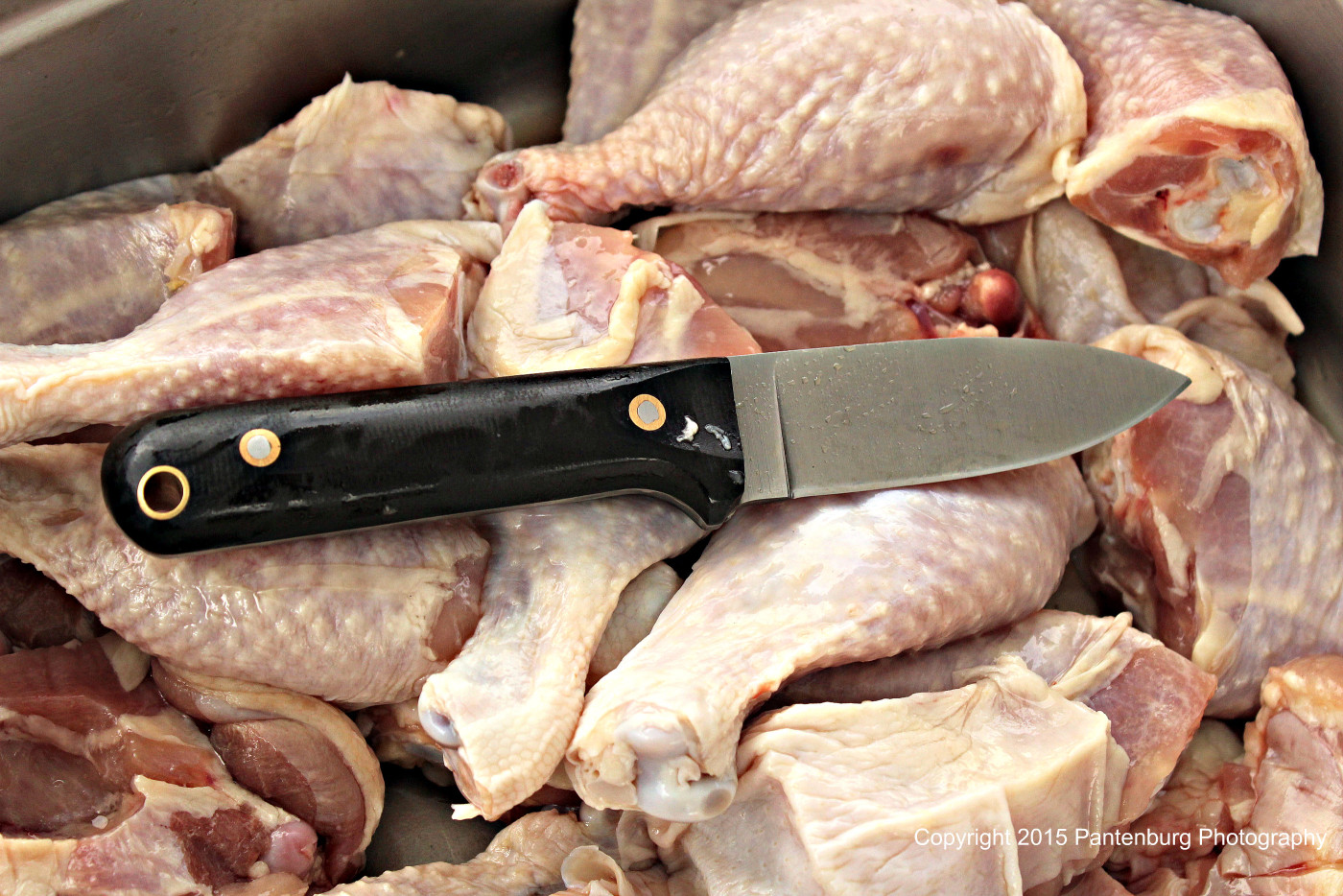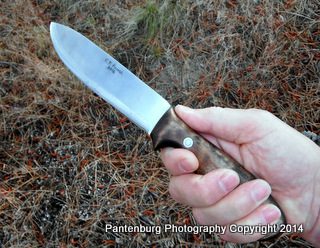One of the first decisions when buying a knife should be how well the handle fits your hand. Here is how to find a knife handle that best fits your needs.
by Leon Pantenburg
Use a knife for very long and you’ll develop definite opinions about ergonomic handles. To start with, “ergonomic” isn’t the same for everyone, and one size doesn’t fit all. A knife handle that works for my wife or daughter with their small hands, is not going to work very well for my large hands.
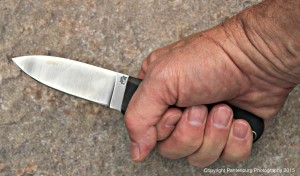
The four-inch handle on this L.T. Wright Next Gen fits my large hands very well. I used the knife extensively, cutting up 80 pounds of chicken at a company picnic.
And a fillet knife handle won’t be the same as a hunting knife handle. A chef’s knife would need a different handle entirely.
Here are some thoughts about choosing a handle:
A good place to start is by handling the knife if possible. It should feel good and comfortable in your hand. You should be able to tell very quickly if this handle will be comfortable for you.
- Look at how each finger works as part of the grip. How well do the index and thumb fit together? These two will essentially guide the direction of blade tip. Does the swell of the handle fit the hollow of your hand?
- Are there any spots that put pressure on any part of your palm? These have the potential to create blisters or sore spots if the knife is used heavily.
- Is the handle long enough? The biggest complaint I hear from experienced survival-types is that handles are too short, with a diameter that is too small. My right hand palm measures four inches across. A knife handle that is shorter than that usually won’t work for me.
- What about the angle between the handle and the blade? If you’re looking for a chopper, you might need an angled handle.
But what if you’re ordering from an online company – how do you assure that the handle will be right?
Start by measuring your hand, and then look at the specs of the knife. The handle should be close in size to your hand measurement. If possible, go to a retail store and check out a knife with a similar-sized handle. You may be able to make an accurate comparison.
One way to avoid grief down the line is to only order through a reputable company with a good product warranty.
I’ve ordered several knives that looked great in the catalog, but that just didn’t work when I got them in hand. In all these cases, I was able to return them for a full refund or trade with no questions asked.
Handle material:
You can get a handle made out of anything. But what is the best as far as safety? Here are some handle materials I have used very successfully.
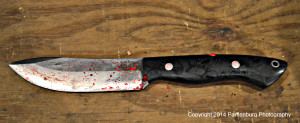
The micarta handle on this Bark River Kalahari never got slippery, even when covered with blood.
Micarta: This smooth plastic-like material will fool you. It seems like it should get slippery when wet, but the opposite is true. I used my Kalahari, with a black micarta handle, to field dress a whitetail buck a couple years ago.
At one point, I had to dip my hand and the knife into the abdominal cavity, into the bloody slurry that used to be the heart and lungs, to cut the esophagus.
To my surprise, the handle seemed to get “grippier” and tacky. There was no danger that my hand would have slipped onto the blade.
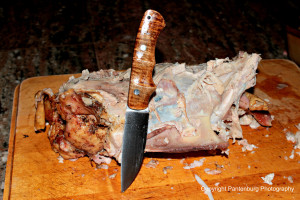
The handle on this Trakker Companion never became unsafe to use.
Wood: Here’s another surprise material. I’ve used my Bark River Sahara to gut and skin a whitetail buck and bull elk. In both cases, the knife got covered with blood and other body fluids.
The stabilized desert ironwood handle never got slippery, and the Kalahari handle design was very safe to work with.
The same thing happened with my walnut-handled C.T. Fischer Nessmuk. The handle design, combined with good materials, made the knife safe to handle even when wet.
I used a curly maple handled Bark River Trakker Companion to completely disjoint and cut up a roasted turkey. Despite the slippery fat I got all over my hands and the knife handle, there was never any safety concern.
Composites: Just because the knife has a black, plastic-looking handle doesn’t mean they’re all the same. I have a Mora 840 Companion with a rubberized handle and my hand has never slipped when using it. I use mine frequently when cleaning panfish, and safety isn’t an issue.
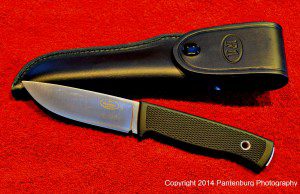
The handle on this Fallkniven F1 is very comfortable to use.
My Fallkniven F-1 has a Thermorum Elastomer handle, and my Cold Steel SRK and Master Hunter have Kraton handles. All of these have been tried and tested, and proven to work very well.
But a poorly-designed, plastic-looking handle won’t necessarily be a safe handle. Make sure you check it out carefully.
Do I want a guard or hilt?
Maybe. The original Bowie knife had a large guard to keep hands from slipping down onto the blade when thrusting. And if you’re hunting hogs or using your knife for stabbing something you might need a hilt. My dad’s Hitler Youth knife has one, and so does my drop point hunter.
But arctic survival guru Mors Koschski says a hilt gets in the way of using, and claims in his book “Bushcraft” that he hasn’t seen anyone injured using a knife without a hilt.
I don’t know. My hand has never slipped from the handle onto the blade. I also don’t “choke up” on the blade to use the tip, nor will I use a choil on a blade. I think choils are a bad design feature, and they negate the safety aspect of a well-designed handle.
In every discussion about knives, there are differences of opinion. What do you think?
Please click here to check out and subscribe to the SurvivalCommonSense.com YouTube channel – thanks!

